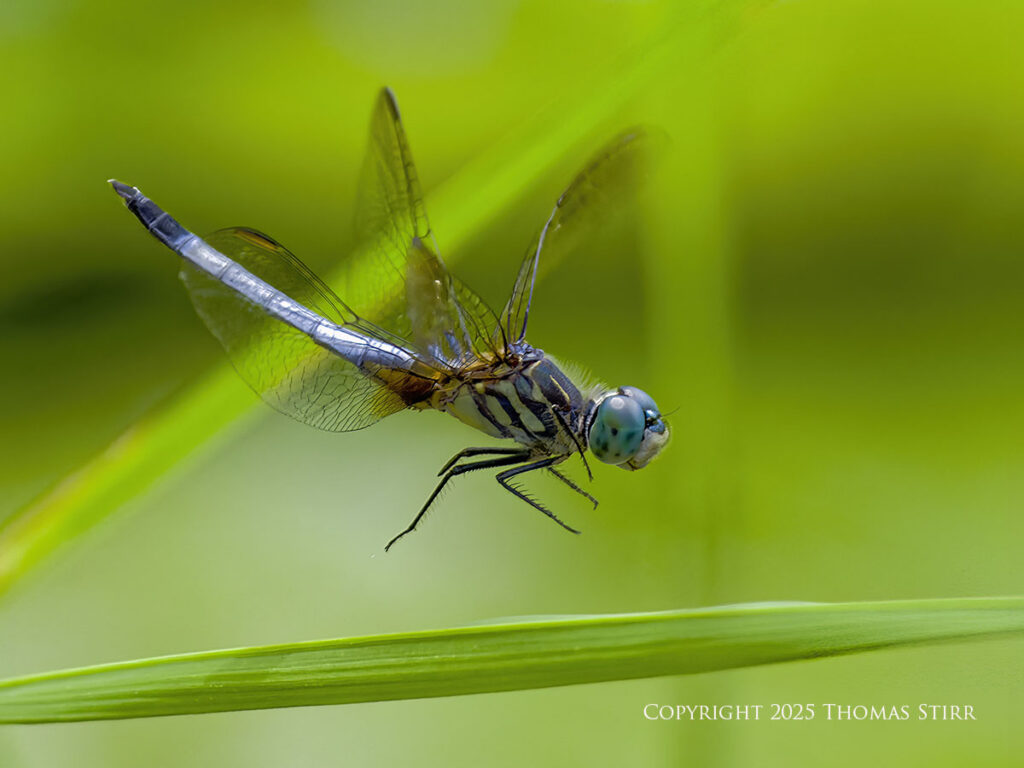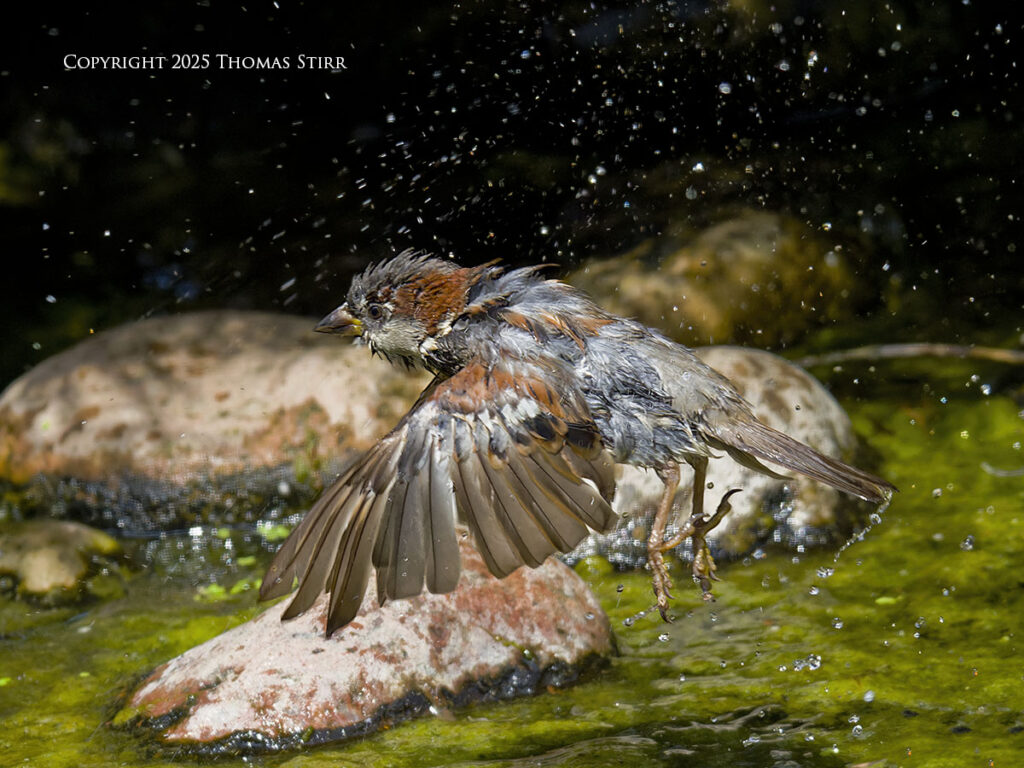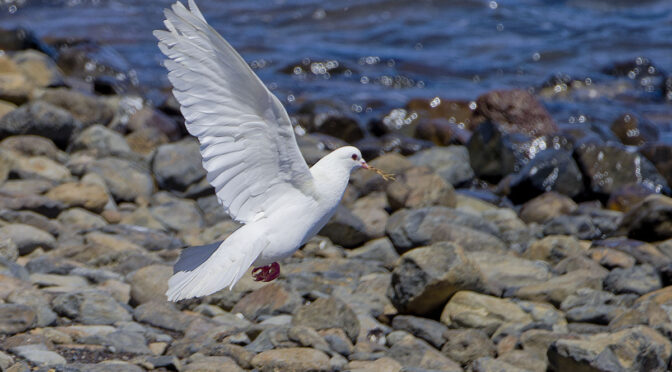As photographers many of us have an overreliance on C-AF (continuous auto focus) and on occasion may sub-optimize our image capturing potential. Sometimes this happens when we lose sight of our photographic objectives, and fall into habitual ways of using our camera gear.
NOTE: Click on images to enlarge. To view this article in a range of other languages click on the Canadian flag in the upper right corner.

When reading many camera reviews we can find a fixation with C-AF (continuous auto focus) performance. Some reviewers try to capture very long runs of images using C-AF.

They then examine those long image runs frame by frame, and report on how many times a particular camera missed acquiring auto-focus on various frames.

Often they report on the percentage of image captures that were in perfect focus, as well as those that were slightly out-of-focus, and those that were clearly missed. Then they make up some charts to compare C-AF performances between cameras.

Of course there is nothing inherently wrong or misleading with this type of assessment. Much of the work that we do when creating action-oriented images, like birds-in-flight, can require that our cameras have very good C-AF performance.

Like all things photographic there is a downside when we have an overreliance on C-AF. It blinds us to the potential of using other techniques, or capabilities that our cameras may have, that can increase our odds of capturing a precise action moment.

I can’t speak for other photographers about how they choose to use their camera gear. When out in the field my intent has always been to capture an exact moment in an action sequence. If I capture one, good useable frame from each image run, I’m a very happy camper.

I have very little interest in capturing long, uninterrupted image runs… instead choosing to shoot in short bursts of images… at precise times.

The only times that I have purposely captured very long runs of action-oriented images with C-AF is when I was trying to demonstrate a camera’s performance for an article.

When we have an overreliance on C-AF we can get obsessed with the frame rate that is available with this auto focusing approach. For example, many photographers would have a significant interest in cameras like the OM-1 and OM-1 Mark II that are able to shoot at 50 frames-per-second when using continuous auto-focus.

There is a caveat. A photographer must use a lens that is also capable of shooting in C-AF at 50 frames-per-second. Neither of my primary birding lenses (i.e. M.Zuiko 150-600 mm f/5-6.3 IS or M.Zuiko 100-400 mm f/5-6.3 IS) can operate in C-AF at 50 frames-per-second.

The focusing motors in those lenses are limited to a maximum of 25 frames-per-second with C-AF. So the C-AF performance of 50 frames-per-second of those OM bodies is not attainable for me with my primary birding lenses. In essence it is a non-existent advantage for me.

We need to check on lens compatibility when buying a new camera body like the OM-1, to make sure that some of the lenses we own can operate at the anticipated fast AF-C rates. Otherwise we may inadvertently disappoint ourselves with a camera body purchase.

On the other hand, a camera body like the OM-1 or OM-1 Mark II, can shoot at 120 frames-per-second… locking the focus and exposure with the first frame of the run, when using Single Auto-Focus. This could increase the chance of capturing a specific action frame by 240% over using C-AF @ 50 fps.

If I ever owned an OM-1/OM-1 Mark II, I would use S-AF at 120 fps far more often than I would ever use C-AF at 50 fps… even if I owned lenses that could shoot at that fast C-AF rate.

The reason is simple… the more in-focus frames I can get of an action sequence… the more opportunity I have to capture the precise moment that I have pictured in my mind. With my E-M1X the difference between shooting in C-AF at 18 fps vs. S-AF at 60 fps is a whopping 333% increased likelihood of capturing a precise image capture.

None of the images featured in this article were captured using C-AF (continuous auto-focus). All were shot using Single Auto-Focus with the first frame locking focus and exposure for all of the frames that followed in the image run. A frame rate of 60 frames-per-second was used for all of the photographs in this article.

Single auto-focus at 60 frames-per-second was also used for the image above, and the one that follows. These two photographs were captured using a Nikon 1 V2… a camera that was launched 13 years ago in October 2012.

It is possible that many owners of Nikon 1 cameras never shot at 60 frames-per-second when photographing birds in flight. Many would have used C-AF at 15 or 20 frames-per-second instead… and may have missed many potential precise image captures as a result.

It is important to remember that every image we create has a specific depth-of-field based on the aperture and focal length used, as well as our distance from the subject. That initial depth-of-field exists regardless of the auto-focusing mode we use.

Based on the shooting parameters in the EXIF data for the photograph above, the Cedar Waxwing would have had a depth of field of 0.23 metres (~ 9 inches) in which it could fly and still remain in focus.

In many cases the flying angle of a subject bird is such that it cannot fly out of the in-focus zone fast enough to result in out-of-focus images, as long as a very fast frame rate is used. A classic case is when a bird is flying parallel to the sensor in our camera body… as was the case of the Baltimore Oriole in the above photograph, captured at 60 fps.

Some photographers view their camera as little more than an image making slave. They expect their camera to capture perfect images all the time… and when they don’t… some photographers blame their camera gear. Not accepting any personal responsibility for failed photographs is not a path that leads to skills improvement and personal growth.

If we want to get the most out of our camera gear, we need to become partners with it. And, as a partner we need to assess shooting situations carefully, choosing to use techniques that will help our cameras be successful with their image making missions. Sometimes that means recognizing when we have developed an overreliance on C-AF.
Technical Note
Photographs were captured handheld using camera gear as noted in the EXIF data. All images were created from RAW files using my standard process in post. This is the 1,487 article published on this website since its original inception in 2015.

How you can keep this website advertising free
My intent is to keep this photography blog advertising free. If you enjoyed this article and/or my website and would like to support my work, you can purchase an eBook, or make a donation through PayPal (see Donate box below). Both are most appreciated. Sometimes all we need as photographers is a bit of inspiration. We hope you can find some of that inside Finding Visual Expression II.
Finding Visual Expression II is available for download for an investment of $11.99 CDN. The best viewing experience of this eBook will be at 100% using Adobe Acrobat Reader.
You may be interested in all of the 30 concepts covered in both of these related eBooks. If so, you may want to also consider Finding Visual Expression.
Finding Visual Expression is available for download for an investment of $11.99 Cdn. The best viewing experience of this eBook will be at 100% using Adobe Acrobat Reader.
Our other eBooks include Images of Ireland, New Zealand Tip-to-Tip, Nikon 1: The Little Camera That Could, Desert & Mountain Memories, Images of Greece, Nova Scotia Photography Tour, and a business leadership parable… Balancing Eggs.
If you click on the Donate button below you will find that there are three donation options: $7.50, $10.00 and $20.00. All are in Canadian funds. Plus, you can choose a different amount if you want. You can also increase your donation amount to help offset our costs associated with accepting your donation through PayPal. An ongoing, monthly contribution to support our work can also be done through the PayPal Donate button below.
You can make your donation through your PayPal account, or by using a number of credit card options.
Word of mouth is the best form of endorsement. If you like our website please let your friends and associates know about our work. Linking to this site or to specific articles is allowed with proper acknowledgement. Reproducing articles, or any of the images contained in them, on another website or in any social media posting is a Copyright infringement.
Article is Copyright 2025 Thomas Stirr. Images are Copyright 2014-2025 Thomas Stirr. All rights reserved. No use, duplication or adaptation of any kind is allowed without written consent. If you see this article reproduced anywhere else it is an unauthorized and illegal use. Posting comments on offending websites and calling out individuals who steal intellectual property is always appreciated!




Again a great article. I am one who almost always use C-AF. I have the 100-400MM II lens and the OM-1 MarkII. I will try S-AF more often as my subjects are mostly birds. I really like the statement about looking at the large number of photos and blaming the camera for the blurry photos! I know I do that and wonder what “magic” setting on my camera needs to be changed instead of the person behind the view finder. I need to practice, practice, practice
Hi John,
It wasn’t until I got my E-M1X bodies that I really began to understand the potential value of using S-AF at 60 fps in terms of capturing precise action moments.
I just reprogrammed by Custom Mode C2 this morning so I can photograph more birds in free flight using S-AF at 60 fps. I haven’t gone out to do any extensive testing yet… hopefully that process will begin tomorrow.
Tom
Hi Thomas
Another excellent thought provoking article.
Where do you get your info on the lens focus frames per second? Is this deduced? Experience?
Like Xavier I would love some insight into why you use some settings rather than others.
Hi Ian,
The choice of auto-focusing mode and frame rate is an experiential decision. My fundamental approach is to use the fastest frame rate available to me that will likely be successful… given the size of the subject, its direction of travel relative to the focal plane of my camera’s sensor, and its speed of travel. I then select the appropriate auto-focusing mode, and set the frames-per-second.
For example when photographing a horse jumping event, I used C-AF with the maximum frame rate available with my camera (i.e. 18 fps). https://smallsensorphotography.com/photographing-horse-jumping . I used this auto-focusing mode as the subject was very large and in some cases was moving towards my camera. This meant that it would very quickly move out of focus if I did not use C-AF.
Birds taking flight typically do not move very far physically as they become airborne, so there is less risk of them flying out of an in-focus depth-of-field. This makes using S-AF at a very high frame rate a practical decision that yields the best opportunity to capture a unique body/wing position.
I adjust my shutter release timing based on the flight direction of the bird. If the bird is flying parallel to the focal plane of my camera, I can wait until it is almost leaving the composition before fully depressing my shutter release, and thus write the images spooling in temporary memory to my card. If the bird is flying directly towards me I would not typically even try to capture any images as this flight angle does not usually yield any interesting, useable images. If the bird is flying towards me, but on a reasonable angle (e.g. 30 degrees), then I would try to fully depress my shutter release as soon as it launches into flight… since the bird would move out-of-focus fairly quickly given its flight direction.
When photographing birds and insects taking flight I use S-AF with Pro Capture H set at 60 frames-per-second. My Pre-Shutter Frames and Frame Limiter are both set to 15 which means that I will only capture the last 15 frames that have been spooling in temporary memory. This frame rate coupled with my Pre-Shutter and Frame Limiter settings give me a shutter release response time of 1/4 second which I find is fast enough for my purposes, and my physical abilities.
I hope this has helped.
Tom
Hi again Tom
Many thanks for that. It’s another article!
Your comments are very thought provoking.
Thanks again
Ian Mackereth
Hi Ian,
I’m glad the additional information was helpful. 🙂
Tom
Thomas,
Another excellent article! Keep up the great work and publish more books.
John Hulburt
Adjunct Professor – UVA Charlottesville
The Art of Photography
Thanks John… glad you enjoyed the article. Working on a couple of projects… one is getting close. The challenge is finding time to fully dedicate to them!
Tom
Hola Thomas.
Te queria pedir, si fuera posible que en un próximo artículo pudieras abordar un tema que me da muchos dolores de cabeza. Seria, que expolicaras, qué configuración (todo y ser muy particular de cada fotógrafo) en diferentes temas, como por ejemplo: aves en vuelo, aves quietas, fauna en general y macro, para poder ponerlos en cada uno de los modos C1, C2, C3, C4.
Espero tu respuesta.
Un saludo y felicidades por tus consejos.
Hi Thomas.
I wanted to ask you, if it would be possible in a future article to address a topic that’s been giving me a lot of headaches. I would ask you to explain which settings (even though each photographer’s settings are very specific) for different subjects, such as birds in flight, still birds, wildlife in general, and macro, so I can use them in each of the C1, C2, C3, and C4 modes.
I look forward to your response.
Best regards, and congratulations on your advice.
Hello Xavier,
I probably use my camera quite differently than many photographers so I’m not sure how helpful it would be for you to know what settings that I use for various subject matter. Having said that here is an article that discusses how I set-up my C1 through C4 custom modes: https://smallsensorphotography.com/bird-photography-settings
Hi thomas, May i know what memory card you used? Since you capture most of the pictured with pro capture h mode.
Thanks
Hi Jon,
I mainly use SanDisk 64GB V90 II UHS-II cards. I also have some older Transcend 64GB V90 II UHS-II cards that still see some in-field use from time to time.
Tom